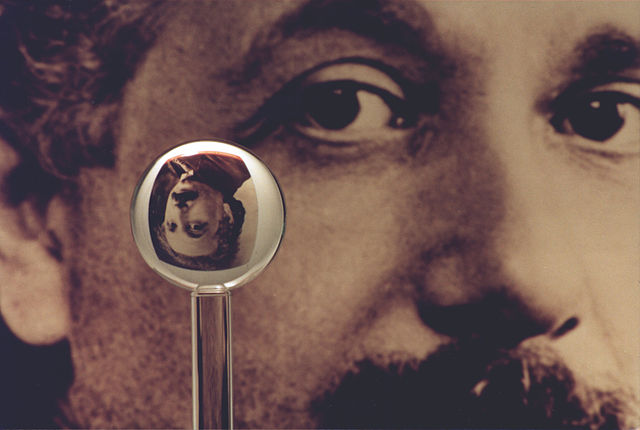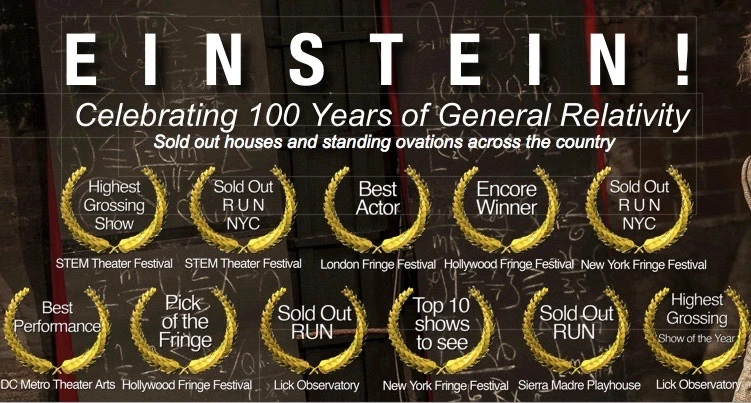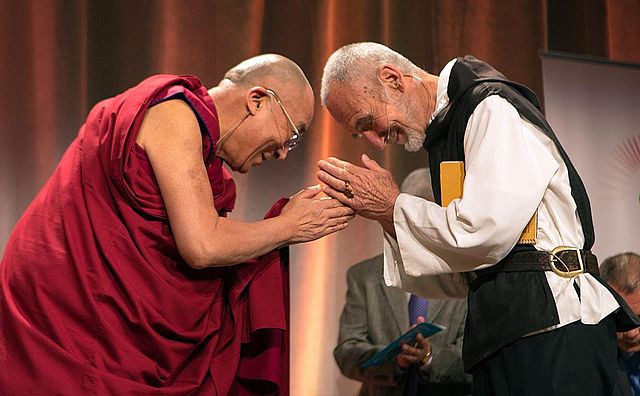It’s Sydney Science Festival this week so I’m going to 4 talks and liveblogging them. Tonight’s talk by Geraint F Lewis is Einstein’s Wonderful Idea: A Century of Space-Time, Black Holes and Expanding Universes, celebrating the 100th anniversary of General Relativity.

Intro from the head of the USyd School of Physics and Acknowledgment of Country interrupted by heckler saying something like “isn’t it time to stop doing this mumbo jumbo”? He’s dealt with nicely by threatening to call security. (There is also a science crank statement in the Q&A by a guy who thinks General Relativity is actually super easy and why doesn’t the department acknowledge it?) Talk by Lewis starts.
It’s 100 years since General Relativity but to set the scene, we need to go back to 1905. This was Einstein’s miracle year where he produced three discoveries each of which would have been enough to crown his name in physics. The three were Special Relativity, the photoelectric effect and Brownian motion. What’s little known is he got the nobel Prize for the photoelectric effect and not Special Relativity (which was then seen as a bit esoteric and hard to understand).
However, it was Special Relativity that got Einstein on the path to General Relativity as his major challenge. Einstein was concerned with gravity. Although Newton’s work on gravity had been accepted for centuries, the orbit of Mercury deviated from Newton’s predictions. More importantly for Einstein, Newton’s universe required absolute space and time: everyone’s clocks ran the same and everyone’s distances agreed. Since Special Relativity overturned this, it meant that Newton’s equations no longer made sense and had to be reworked relativistically.

Einstein’s insight was that simulated weightlessness (eg. on a falling plane) is equivalent to true weightlessness. There is no experiment you could do inside a falling plane (short of looking out the window) that would highlight the difference between falling and floating in space. [Although not mentioned in the talk, this is what allowed Einstein to proclaim the equivalence of gravity and acceleration.]
From this Einstein developed his famous field equations, which tied together mass and energy to the geometry of spacetime. Gravity was the end result of a body curving the fabric of spacetime around it. These field equations successfully predicted Mercury’s orbit which established General Relativity in the scientific community.
Although Einstein’s field equations look simple in their final form, they actually require some extremely difficult maths to apply to real situations [in terms of determining what arrangements of spacetime satisfy the equations]. The basic formulation of GR was just the start of it. Very soon though, Karl Schwarzschild worked out the equations for gravity from a spherical object. He applied this to planets, neutron stars and was able to extend the analysis to an object so dense that no mass-energy can escape it (the black hole).
While originally thought of as just a mathematical construct, ever since the 60s they began to be discovered. At the moment, it appears that almost every galaxy has a supermassive black hole in the centre. They also emit extremely powerful jets (caused not by the black hole itself but by collisions of matter around its accretion disk) which can be as bright as a trillion stars. Lewis showed one he co-discovered that is 10 billion light years away but glows as brightly as a star close to earth.
On the cosmology side, Einstein was committed to static universe (which was the consensus at the time). He therefore added a cosmological constant to counteract what would otherwise be an expanding universe predicted by his equations. It was Alexander Friedmann who developed models around non-static universes and popularised the idea. Which turned out to be right, since the universe is expanding.
General Relativity is something we encounter every day in our use of GPS. However, the exciting area of research in the future is around wormholes and warp drives that would allow us to traverse vast distances without being limited by the speed of light. These structures are permissible inside GR’s equations but it’s refining the mathematical apparatus (and finding them) that would be the challenge of the next 100 years of General Relativity.
Overall a great start to the festival: a great speaker, very well-paced, entertaining and accessible, and a full house too!




0 Comments